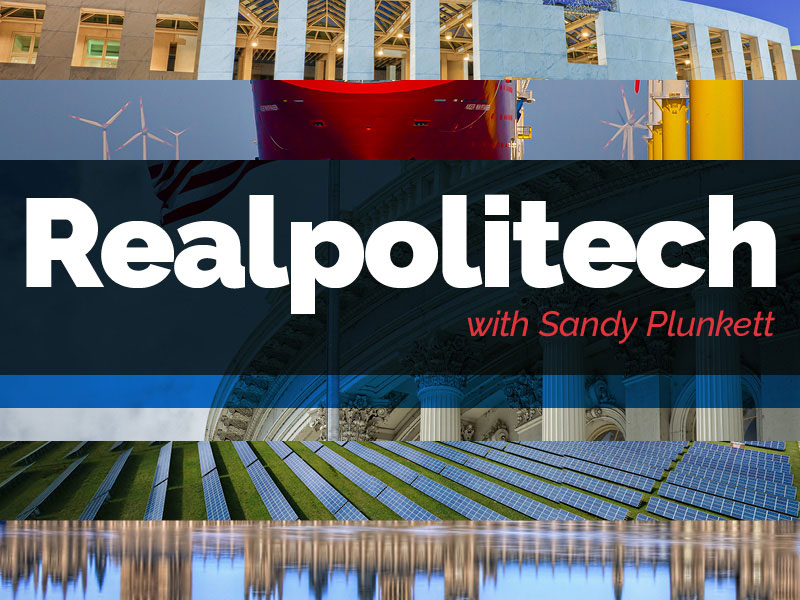Back in 2016, during the time of the Turnbull Government’s Ideas Boom, the CSIRO Futures team, in collaboration with the Advanced Manufacturing Growth Centre, laid out a vision for the future of manufacturing in Australia.
It was very bullish.
“Over the next 20 years, Australia’s manufacturing industry will transform into a highly integrated, collaborative and export-focused ecosystem that provides high-value customised solutions within global value chains”, the report envisioned.
“At the centre of this vision is an ecosystem where businesses, research, education and customers work together, embracing volatility and the opportunities that emerge from it.”
No one would claim we are anywhere near fulfilling that transformation.
But now, nearing the halfway point of that 20-year timeline – a period that saw several government leadership coups, the closing of Australian automotive manufacturing in 2017, a global pandemic, and a change of national government which has made Future Made in Australia (FMiA) its reindustrialisation manifesto – it’s timely to ask: How are we doing? How and where is that vision manifesting, even in small ways?
Measuring by the vital statistics, the prognosis looks grim.

Australia’s manufacturing base as a share of GDP is still the lowest among OECD economies, declining from 6.8 per cent to 5.0 per cent over the last decade, according to Australian Industry Group’s (Ai Group) manufacturing performance benchmark 2024 report.
Manufacturers’ expenditure on research and development (R&D) was $4.84 billion in 2013–14 and only a little higher, about $5 billion in 2023. And in the same period, while manufactured imports remained high, exports fell by a fifth.
And the overwhelming majority of manufacturers are still small, cash-constrained, mostly unsophisticated family owned and run businesses which are largely separate from global supply chains.
But there are some new national medium-sized manufacturing champions emerging, and they have many revealing lessons as we seek to diversify and fortify the Australian economy in the next decade and beyond.
Companies like rocket and satellite maker, Gilmour Space Technologies; the ASX-listed counter-drone manufacturer, DroneShield; and laser tech & photonics technology company BluGlass, also ASX-listed.
These companies represent soundly run, aggressive growth businesses with new-to the-world technology. Each has an outsized appetite for risk and reinvestment, and close ties to global customers and supply chains.
“There are about ten to 15 really ambitious, globally driven and connected domestic manufacturers with sophisticated technical and commercial management and a willingness to significantly reinvest in R&D, that are showing how 21st century Australian manufacturing can be done,” says Adam Gilmour, chief executive at Gilmour Space Technologies.
Mr Gilmour, who is a co-founder of the company with his brother James, is waiting (for months now) for an Australian Space Agency permit to launch the company’s Australian designed and manufactured Eris rocket.
“Is a dozen or so advanced manufacturers enough to declare victory for the national economy?” he asks rhetorically. “No. But it’s a new foundation to build upon and its worth looking closely at what they are doing and how.”
Oleg Vornik, the Russian born and raised chief executive of DroneShield agrees. “People make a lot of excuses for why we can’t do certain things from Australia. It’s too embedded in the culture. My experience is very different.”
Setting up in Australia was actually a requirement of DroneShield’s original backer, the US Bergen Fund, ten years ago.
The investors required the then startup, which was founded by two US-resident scientists who foresaw the rise of drones and the need to defend against them, to list on the ASX because of its reputation for supporting small cap growth stocks.
The other condition of Bergen’s investment was for the founder scientists to hire a commercially driven CEO. Mr Vornik, who had a career in investment banking but wanted to do something different, jumped into the role with zero manufacturing experience. Three years later, he sacked the founders.
DroneShield is on an expansionary tear. It has completed a $115 million capital raise and opened a new 2000 square metre headquarters in Pyrmont, Sydney. The facility includes a dedicated floor for R&D, engineering and manufacturing to fulfill orders from US government, and defence and commercial customers in 70 countries. Nearly 80 per cent of the $115 million is dedicated to R&D and engineering.
There are other promising signs of life in manufacturing that have – as yet – little to do with the Future Made in Australia thrust.
According to Ai Group, the Australian manufacturing sector posted a 2.8 per cent real growth rate in 2023, with output higher than any point in the last decade. It undertook $3.4 billion of capex, a 30 per cent jump on pre-pandemic levels, and contributed $30.8 billion of value-add to the Australian economy.
“Manufacturing performance has strongly rebounded during and following the pandemic – with material increases in value-add, employment, exports, financial performance and capex,” the report said.
Jens Goennemann, the managing director of the Advanced Manufacturing Growth Centre (AMGC) for more than eight years (working with and seeing-off multiple briefly tenured industry ministers along the way) says the narrative around Australian manufacturing has changed in several important ways.
“First, we stress that manufacturing is a capability, not a sector. We can and need to,develop this capability across the board,” Mr Goennemann said.
“Second, the best indicator of being advanced is in the sophistication of the business. A firm can be considered ‘advanced’ not so much on what it makes and sells, but how it goes about making and selling.”
Advanced manufacturing is on a continuum, Mr Goennemann adds: every company can and should become more advanced.
“Manufacturing success is not static, nor limited to a few highly technologically advanced companies. Any Australian manufacturer can leave the trodden path and embark on the journey to advanced knowledge, processes or business models,” he says.
This means advanced IP and competitive markets knowledge; advanced processes using state of the art technology and digital infrastructure; and advanced business models offering highly customised niche solutions that are tightly integrated into supply chains.
Mr Goennemann says Australia has advanced manufacturers across the entire spectrum, from textiles, to welding, to medical technology, defence and aerospace.
He also laments the recent federal Budget overlooked them as a strategic constituency capable of bringing the Albanese Government’s FMiA agenda to life.
“For one of the most manufacturing-labelled budgets I can remember, our high achieving manufacturers, the ones with real potential to internationalise and scale, were overlooked.”
But is he right about the changed cultural narrative toward manufacturing in this country, a capability most Australians have long thought to be dying?
Last week saw some 70-plus Australian economists and policy ‘specialists’ break ranks from the Productivity Commission’s long-held ‘comparative advantage’ mantra for developing the nation’s 21st Century economy, and its very public concern about the government’s interventionist and subsidy driven FMiA thrust.
Grouped under a banner called ‘Progress in Political Economy’ the economists wrote an open letter enthusiastically supporting the government’s “active measures to strengthen Australia’s manufacturing capability and guide investment in critical infrastructure, including measures proposed in the government’s FMiA framework.”
Renowned Australian economist Saul Eslake dismissed the open letter as Manufacturing Fetishism.
He pointed out that we have a mining sector and an agricultural sector with shares of GDP five and two times larger than the average for all advanced economies because those are the things we are particularly good at, in good part because of natural endowments.
“I’m not a card-carrying laissez-fairist,” Eslake posted on LinkedIn. “But I’m not a manufacturing fetishist either.”
Realpolitech’s read on the Open Letter is that it revealed a ‘renewable energy fetish’ rather than a manufacturing one.
It was also an unnuanced cheer for the progressive interventionist policy which is de rigueur in much of the western world since Covid and especially since the introduction of the US Biden Administration’s absurdly named Inflation Reduction Act, (IRA).
The IRA is injecting an estimated trillion dollars in subsidies for renewables and has forced the rest of the world to do their best to compete with it with their own mini-IRA’s. Australia’s FMiA is one of those.
Many innovation, and tech manufacturing insiders fear the net-zero and renewable energy mission risks creating blind spots for developing industrial complexity and economic diversification, especially when the Government’s focus seems to be on solar and battery tech, which China has most of the world market in.
Also, they are quick to point out, having access to affordable and reliable energy is top of their minds as they seek to expand and take on regional and global markets. Few believe wind and solar are going to cut it.
There are also clear geographic shifts in the domestic manufacturing market. According to Ai Group, over the last two decades, “real manufacturing value-add has grown in Queensland (16 per cent) and Western Australia (60 per cent), which manufacturing value-add has declined in NSW and Victoria (15 per cent) and in South Australia by 40 per cent, the latter coinciding with the exit of the auto industry.
There were 904,000 manufacturing jobs in Australia in the December quarter of 2023, and an 5 per cent increase in manufacturing jobs since the pandemic, reflecting recent growth in the industry. However, post-pandemic growth only partially recovers a 15 per cent decline in jobs which occurred in the years following the GFC.
The manufacturing share of total Australian jobs declined from around 10 per cent two decades ago to 6 per cent by 2018. The share of Australian jobs in manufacturing has been broadly stable at 6 per cent since then.
AMGC’s Jens Goennemann says the way we measure manufacturing jobs, capability and progress needs a rethink, especially in terms of how those metrics relate to government support programs.
He advocates the federal government develops a scorecard tool that tracks the three primary characteristics that go to define ‘advanced’: advanced knowledge; processes and business models. Specific indicators would include R&D intensity, patent use, collaboration, relative wage levels, ICT expenditure, new goods and services infrastructure and trade intensity.
But key to all of that ‘advancement’ in new or traditional manufacturing companies and markets is having agile, and sophisticated leaders and managers. They are much harder to find.
DroneSheild’s Mr Vornik described the intensity that comes with running a counter-drone manufacturing company as so far beyond anything he experienced in investment banking.
“Defence and tech manufacturing is a business that finds your weak spots and hammers on them relentlessly until they are no longer weak spots or something bad happens.”
Do you know more? Contact James Riley via Email.

